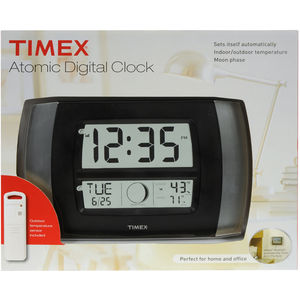

This charge within quartz creates an electric signal that is harnessed for the same sort of oscillation that is created by the oscillator and escapement in a mechanical watch (or a pendulum in a grandfather clock).īy manipulating this intrinsic energy within quartz, an electronic watch can keep accurate time for years. Quartz is a naturally occurring mineral that is filled with piezoelectricity, an electric charge. A quartz clock (or electronic clock) relies on something called crystal oscillation. Mechanical timekeeping was the only game in town until the 20 th century when a Bell Telephone Lab scientist named Warren Marrison developed the first quartz clock in 1927. (This process can be hard to visualize, so here is a helpful video: The escapement transfers the rotating energy of the gears into back-and-forth energy that allows for efficient and accurate timekeeping. The oscillator and escapement work together to regulate the energy and provide balance to the timekeeping function (the oscillator is also referred to as the balance wheel or balance spring). They transmit energy to the other parts of the watch and they also turn the hour, minute, and second hands of the face. The mainspring is wound by the stem or oscillating weight, which is how energy is generated, which is then transmitted through the gears.
TIMEX ATOMIC TIME INSTRUCTION MANUAL MANUAL
Depending on whether the watch is a manual or automatic winding watch, it will either have an external winding stem (manual) or an internal oscillating weight (automatic). Inside a mechanical watch, you will find a few essential components : the mainspring (energy), gears (or wheels), escapement, and oscillator. Though the innards of a wristwatch and a grandfather clock look very different, they are fundamentally the same.
TIMEX ATOMIC TIME INSTRUCTION MANUAL HOW TO
Mechanical clocks have existed for a thousand years, but it took centuries for inventors to figure out how to miniaturize the process so a clock could fit in your pocket or on your wrist. We never would have gotten here without the creation of the mechanical watch. The first mechanical pocket watch appeared in 1505, a seminal event in history that, through great strides and inspired developments, has led to this moment: you can now play Candy Crush on your smartwatch. Time, as the saying goes, marches on, and all we can hope to do is measure it. In truth, our hold on the fourth dimension has always been tenuous. Now, with each passing year, our timepieces get more sophisticated and more accurate, and our grasp on time gets firmer. Reaching back to the sundial, mankind found a way to harness time itself and bend it to our needs. One could argue that the clock was the most transformative invention humanity has ever created.

Even the most accurate timepieces that have ever been created will still lose fractions of a second given enough time. No, you won’t notice it from day to day, maybe not even month to month, but it’s happening. If you’re atomic watch is losing time, it most likely needs to be taking in for servicing.

Every hour, every second, your watch is losing time. No matter how much you cherish your watch, though, it isn’t perfect. Even as mobile phones challenge the need for a watch, people still love them. The wristwatch has gone from status symbol to practical necessity and back to status symbol over its illustrious career. It’s possibly a prized possession, or a gift from a loved one. Chances are, right now, you’re wearing a watch.


 0 kommentar(er)
0 kommentar(er)
